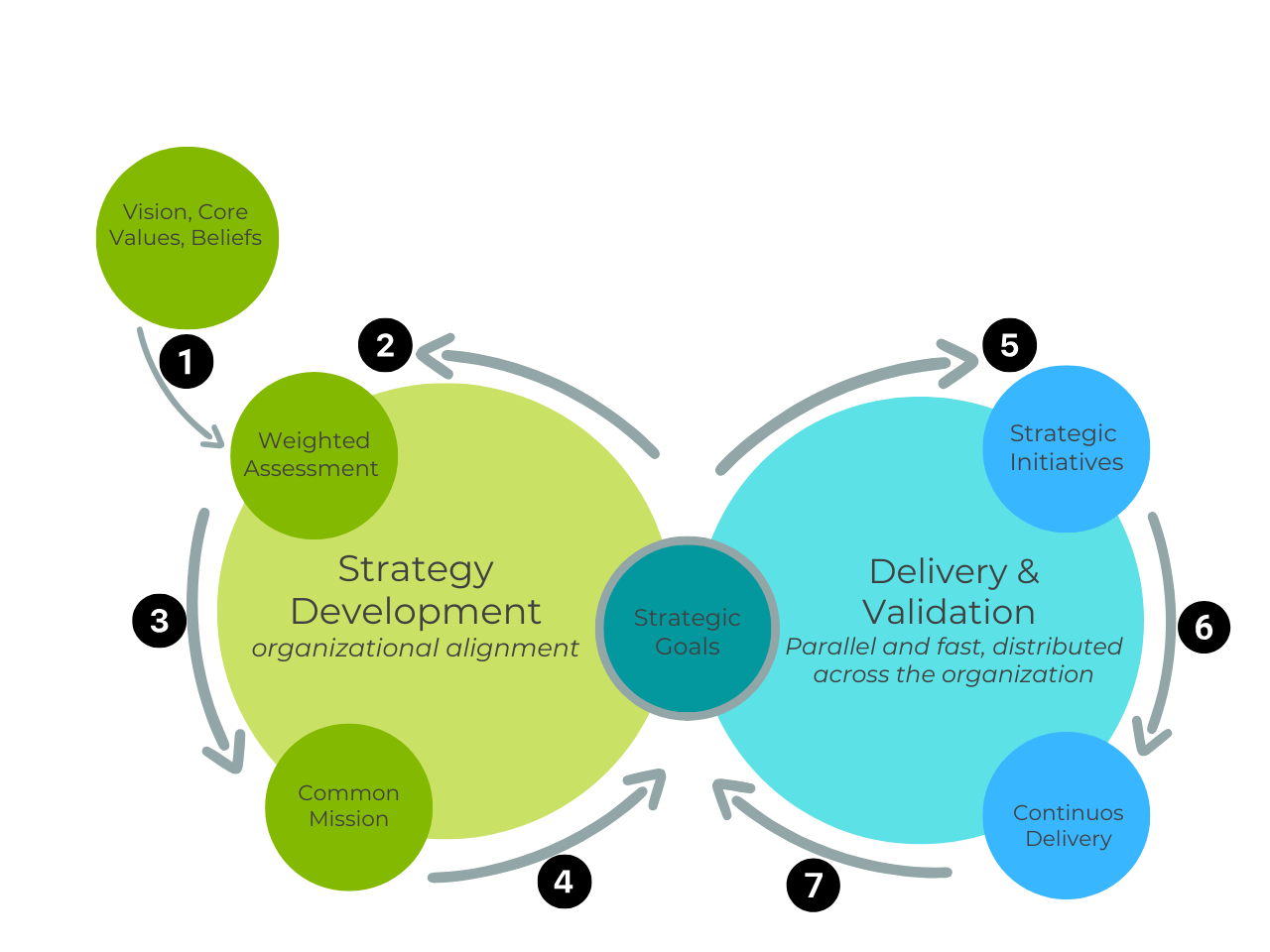The KEGON Business Agility Flow Step by Step
- Joint strategy formulation based on shared visions, values and convictions with interdisciplinary employee participation
- Trends are recognized and evaluated through internal and external company assessments.
- A jointly agreed mission for the company is formulated.
- Formulation of strategic goals for operational implementation from the previous steps
- The strategic goals are the framework for the decentralized implementation of suitable strategic initiatives.
- Operational implementation takes place continuously in short iterations.
- Regular delivery to the market brings us closer to our strategic goal. These market insights form the basis for any adjustments to the strategy.
What are the benefits of the KEGON Business Agility Flow for a company?
- Strategy development is not a black box method, but is lived by the company itself
- Joint strategy formulation increases quality and alignment
- Strategic goals are known across all departments and are a guiding principle for employees
- Work on implementing the strategy is value stream-oriented
What is Business Agility?
Everyone is talking about Business Agility. But everyone understands it differently. What they all have in common, however, is the need to take agility beyond the boundaries of product development.
In addition to Business Agility Flow, our solutions are
Agile Structural Organization
The introduction of agile frameworks such as Scrum or SAFe® has led to revolutionary changes in the process organization of many companies. This often leads to the question of whether it would not make sense to align the organizational structure in an agile way as well. Such an adjustment can help to reduce tensions between the two systems and increase overall efficiency.
There are already some successful models in this area that aim to overcome the disadvantages of the dual operating system described by John Kotter. These models include an approach derived from "Spotify" and the alignment with the product units of the SAFe® process organization.
Our team has extensive experience in evaluating the pros and cons of these different models. Even more important is our expertise in the practical implementation of these models in your specific organizational structure. We support your company in establishing an agile organizational structure that not only fits your goals and processes, but also maximizes your company's agility and responsiveness.
Agile
Leadership
Agile teamwork is standard today. But what does this mean for management? The days of the commander seem to be long gone, but agile leadership is more than just delegating, even with the agile principle of "Decentralize Decision Making". Not only are new agile leadership roles such as the business owner emerging, but a faster and better decision-making and personnel development culture is also being implemented by using new agile practices (e.g. big room meetings) and modern technologies (e.g. AI).
Agile Oprational Value Streams
DevOps as a short-cycle integration of development and operations has dramatically improved efficiency in software development in recent years. In industry, the gap between development and, in particular, operational areas such as production and service is generally still very large. It is therefore necessary and helpful to design these processes, which are referred to as operational value streams in SAFe®, in an agile way and to link them closely to the agile development processes.
The example of car manufacturer Tesla shows how a company can become successful through agility:
Kurt Jäger, SPCT, presents more details in his lecture "Why Tesla became the world's most agile company through AI"


